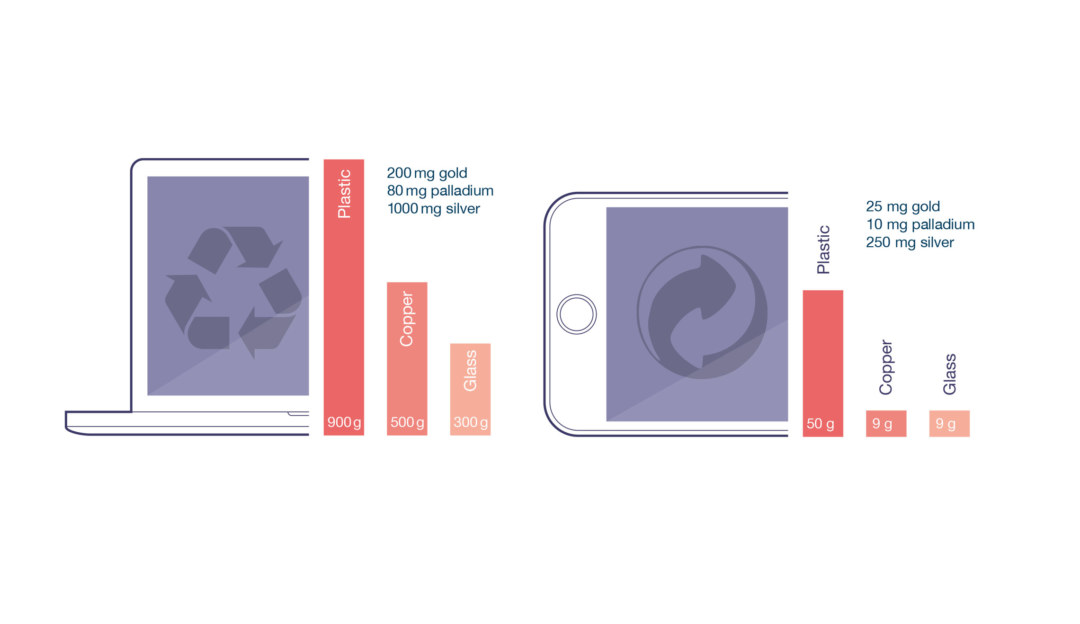
Used for manufacturing tires, among other products, every year over 26 million metric tons of rubber are harvested or synthesized and processed worldwide. Some twelve million of these tons are from a natural source— from Hevea brasiliensis, the rubber tree.

If all of the gold from the ocean floor were extracted, that would add up to around 20 kilos (44 pounds) per person. This might be of particular interest to Americans interested in tying the knot: every year, the USA uses 17 metric tons of gold for production of wedding rings alone.

Rare earths are an integral part of 21st-century technology. This umbrella term includes 17 metals that were discovered in rare minerals in the late 18th century. The metals themselves are anything but rare, however. Even the “rarest” among them— thulium and lutetium—occur two hundred times more often than gold. A good 95% of rare earths are extracted in China.

Who needs which raw materials? The bar chart shows the proportion of the five largest consumer countries in terms of demand for steel and bituminous coal. China processes over half of the total for both raw materials

So much paper is recycled every day in the USA that you could fill a 24-kilometer-long freight train (nearly 15 miles) with it.

An estimated 120 million cast-off cell phones are slumbering away in German private households. A wire made from the copper in these devices would extend some 100,000 kilometers (62,137 miles) and could be wrapped two and a half times around the Earth.

Tritium is a radioactive isotope of hydrogen that is used, for example, in production of self-contained illuminated exit signs for schools, movie theaters, and other public buildings. Tritium gas in a glass tube coated with a luminescent substance will provide years of light without a power supply. One gram (0.035 oz.) of tritium costs around 24,000 euros.

A smartphone is made up of 500 to 1,000 components. In addition to silicon (25 %) and plastics (23 %), you’ll find other recyclable materials such as iron, aluminum, copper, and lead.

During the course of their lifetime, every German will use up 245 metric tons of sand and grit. Each of these raw materials can be found in products where you would never expect to find them, including microchips and computers, glass, ceramics and china, medicines, cosmetics, and cleaning agents.

Is it trash? Far from it! By using recycled materials, we can save up to 90% of the primary raw materials that were so laboriously extracted. This is particularly true of electronic equipment such as notebooks or cellular phones. In 2014 alone, 1.3 billion smartphones were sold worldwide.

There are 25 million metric tons of known cobalt reserves. This special metal is used in high-tech products such as cell phone batteries or aircraft turbines. During the Middle Ages, cobalt compounds were used to color glass and ceramics (cobalt blue). At first, cobalt ore was mistaken for silver. However, it reeked when heated. Clearly it must have been bewitched by a kobold (a spirit or goblin) who had feasted on the precious silver. And that is the story behind the word “cobalt.”

74 % of the materials used in automotive engineering are metals. Plastic (12 %), elastomeres (5 %), fluids, and glass (3 % each) trail well behind. The basic trend in selecting materials for car bodies is crystal-clear: lighter and lighter, which means better fuel economy. The mix of materials in the Mercedes C-Class is a good example of this development: the proportion of aluminum is 50 %.
Infographic: Halbautomaten Kommunikationsdesign
Sources: Statista; Daimler AG; Wikipedia; Solenthaler Recycling AG; Deutsche Umwelthilfe; www.interessante-fakten.de; USGS (United States Geological Survey); www.wissenschaft-und-frieden.de; DERA: Deutschland – Rohstoffsituation 2010; www.rubberstudy.com
